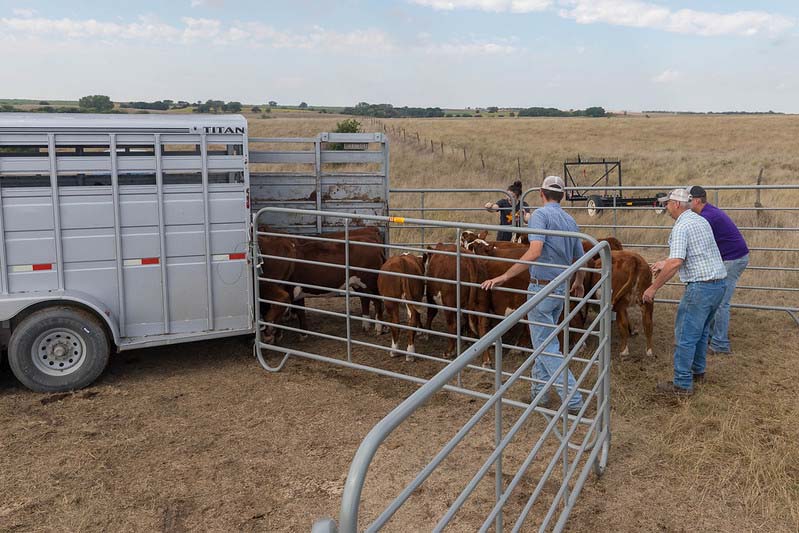
When moving cattle, it is important to be calm when loading them to minimize their stress. | Download this photo.
Cattle Chat: Low-stress handling
K-State beef cattle experts offer tips on reducing calf weight loss at sale time
Oct. 18, 2022
By Lisa Moser, K-State Research and Extension news service
MANHATTAN, Kan. — Moving is stressful — whether to a new school, job or town. In much the same way, a change of environment will cause beef cattle to be stressed, said the experts at Kansas State University’s Beef Cattle Institute on a recent Cattle Chat podcast.
“When cattle are stressed, the first thing they do is urinate and defecate, which leads to immediate weight loss,” said K-State veterinarian Brad White.
And that weight loss can cost producers lost income, said nutritionist Phillip Lancaster.
“When we take cattle to the sale barn, we are getting paid by the pound, so we need to reduce the amount of shrink those cattle experience as much as possible,” Lancaster said.
White explained shrink as “the amount of weight lost prior to when they are sold.”
He cited a K-State study that measured the amount of shrink that 700-pound calves typically experience. The calves were driven on a trailer two hours away and brought back to their starting facility.
“Our study showed that the cattle lost 5-6% of their total body weight, and most of that loss happened immediately when we put them in a loading situation,” White said.
Veterinarian Bob Larson said that amount of loss is not uncommon. Producers can expect cattle will lose at least 2-3%, and that amount is unavoidable. However, he added that there are ways to keep that percentage from climbing higher.
To put that into perspective, White said that 5% loss on a 500-pound calf is 25 pounds.
“If you told me that I could add 25 pounds of weaning weight on my calves, I’d be doing everything I could do to implement those strategies,” he said.
The K-State experts agreed that moving cattle in a way that minimizes the amount of stress they experience is important.
“Make sure your facilities are set up in a way that the cattle can easily move through them and avoid injury,” Larson said.
Lancaster said it is important to keep cattle from standing in a holding pen for long periods of time. That is also true regarding the amount of time they spend standing at the sale facility, according to Larson.
“To minimize shrink, you need to move cattle in a quiet way, get them loaded smoothly, and deliver them to the auction facility close to sale time,” Larson said.
To hear the full discussion, listen to the Cattle Chat podcast online.

